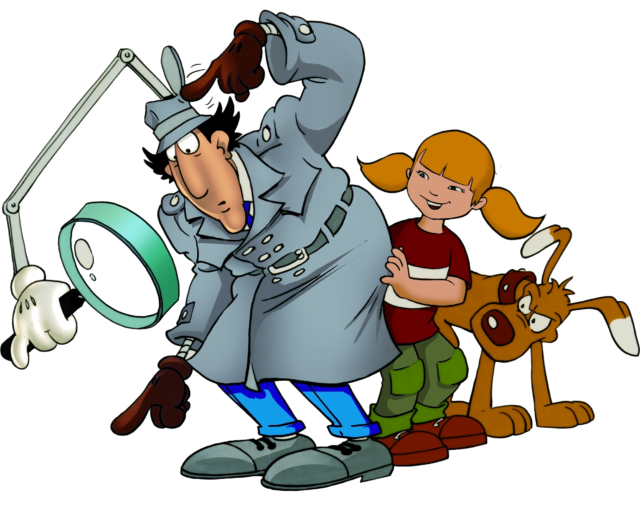Dr. Dan Moxon
If you are expecting to find a summary or a handbook ‘150 tools every participation worker should know about’, you couldn’t be more wrong! What if I told you that becoming more involved in your work was way more intuitive? In order to provide you with expert advice to further improve your practice, I had the great privilege of interviewing Dr. Dan Moxon, a recognised researcher and practitioner in the field of youth participation. Dr. Moxon – a member of the Pool of European Youth Researchers, of the Advisory Board of our Participation Resource Pool, and Director of People Dialogue and Change – was kind enough to share with us some of his secrets on how to foster youth participation in events.
1. Create a space for dialogue
If you feel we are stating the obvious here, you are probably right. But the truth is, all participatory work starts with bringing people together. ‘Young people first need to be present in a shared space, so a discussion can take place. As a facilitator, you are responsible for fostering a space in which people feel safe to express themselves; however, at the same time, you should make sure not to impose a set of cultural values on them. First, because it doesn’t work as a magical formula that guarantees people feel safe and happy; second, because it’s not always feasible nor desirable. Yet, you do have to do that to a certain degree, laying the foundations for inclusion and human rights,’ acknowledges Dan.
2. Ask critical questions
When organising an event, an essential step is to always ask yourself why do you want those people to come together and which questions do you want them to answer? ‘In youth participation work, your goal is, first and foremost, to enable young people to express their ideas and opinions on a given topic and lead them to conscientise both how they relate to the world and the things they would like to change about it,’ emphasises Dan.
To achieve these goals, Dan argues that there are three pairs of questions which need to be addressed:
- What do you have in common with the people present in this room? What are the differences you perceive between the people present in this room and the people outside of the room? This first set of questions is critical in order to foster a sense of community between participants and enable them to define their identity as a group.
- What pisses you off about the world around you? What do you want to change? This second set of questions is critical to get people to reflect on the world around them, identify common issues and problems and the changes they wish to create.
- If anything was possible, which action(s) would you undertake to bring about change? This question is critical to laying the foundation for some sort of collective actions.
Even though these questions may sound simplistic, they often lead to the greatest outcomes because, as Dan claims, ‘everyone in the world can tell you what bothers them!’
3. Welcome opinions
Asking the right questions is one thing, but the hardest part is often doing so in a neutral way. As someone who works to support youth participation, you have an endless power you should be aware of: first, you have the ability to influence the conversation through facilitation and second, young people might look up to you.
‘Ethically, it is critical not to use your power to support a cause and direct the dialogue in a certain way so as to express how the world should be in your eyes. Instead, you have to listen to people and take their views seriously.’
‘You are not there to guide your own interests, your own political objectives. Be really clear that you do not have a preference in how questions are being answered: people should feel it is Okay to disagree with you,’ notes Dan.
According to Dan, at this stage it comes down to using five core things as an internal compass:
- Honestly caring about people
- Being honest with them
- Being open to a diverse range of opinions
- Respecting people individually
Challenging discrimination and injustice where it occurs. Even though boundaries for an open dialogue have been set, you still need to think of the inequalities in the room: whose voice is being heard and whose voice isn’t being heard? Fostering participation also means to moderate the common space in such a way that compensates for the existing inequalities:
your work is to create some room for the most ‘vulnerable’ people to talk, sometimes by preventing others to speak up their mind.
4. Forget about being a ‘know-it-all’
Dan explains that a common mistake in youth participation work is to confuse the role of facilitator with the role of expert. Especially when someone is new to the practice. ‘You might want to do things by the book and feel the need to investigate the topic that is going to be discussed, in order to feel more comfortable moderating the debate. And then you think, “great job, I’ve done my homework!” Sorry to disappoint you, but the more you learn about a given topic, the more you might develop fixed beliefs, unintentionally leading the conversation in a certain way and disregarding the opinions of others,’ he warns facilitators.
Surprisingly, to avoid this pitfall, it appears ‘ignorance’ might be your best weapon! ‘Ideally, you should have almost no prior knowledge about the topic you are tackling, so you learn along with the people. You might try to hide your knowledge, but people are clever and will easily expose you. Once your expertise has been revealed, it is not that easy to return to being the facilitator,’ Dan reveals.
5. Focus on the big picture (Learn from Inspector Gadget)
Does the name ‘Inspector Gadget’ ring a bell? During your childhood, you probably encountered this famous cartoon show’s character, a police inspector who is sent on missions to combat crime across the world. He is equipped with many gadgets in his body to help him fulfil his purpose; however, most of the time, his gadgets turn out being useless. Indeed, Inspector gadget is clueless and relies on his tools to save him from any tricky situation.

He is mostly successful in his missions thanks to his niece, Penny, who is deprived of any fancy gadgets but makes good use of her brain. In the same way, Dan encourages us to stop focusing on specific tools, processes and methods: ‘The job is not to provide an activity, complete the stages of the task and get the group to the end of the modules; the job is to enable people to have a discussion!’ There are a lot of great activities out there; however, at the end of the day, it is not the tool you use that matters, it is what you do with it. He adds: ‘The right tool is the one that lets you create what you are trying to do. The activity is just a way of moderating the discussion so as to distribute dialogue equitably and support the group in making decisions. Everything else is simply bells and whistles!’
6. Acknowledge you are your best resource
The temptation to look for external resources might be great, but the truth is that you are a gold mine on your own. Dan emphasises the fact that fancy tools and techniques are not going to help you when it comes to boosting youth participation: ‘It is knowing how you can use: 1 – your identity, 2 – your body, 3 – your expression, 4 – your voice, and 5 – your touch, to make people feel that you can be trusted, that is going to make the difference.’ He also mentions that a very frequent miss-leading idea in youth participation is that you can and should take yourself out of the picture. ‘In reality, it all starts with you, because you can’t take yourself out of the world at all,’ argues Dan. ‘As a facilitator who wants to support youth participation, you are a part of that “we” the participants have to define. You are a body walking into that common room, so you can never minimise the effect you have on people,’ he adds. Therefore, rather than trying to take yourself out of the equation, you should instead focus on these five key resources you are always in possession of because they are inside you.
7. Reflect on your experiences regularly
We all make mistakes. Even Dan, with his 20 years of experience working with children and young people, still learns the hard way sometimes. What is key here is your desire to grow in your practice by investing time in the learning process.
Here’s what Dan has learned about self-reflection:
- Keep a reflective journal of your experiences as a facilitator/youth worker, in which you write down general remarks at the end of each working session.
- Use scenic composition to reflect, in an artistic way, on your experiences; ideally, two or three weeks after the working session. Here, you will mainly rely on your unconscious to explore your feelings and attitudes.
- Experiment and use free writing regarding your experiences on a regular basis.
Dan notes that the three aforementioned methods are complementary to each another because they can be used at different stages, but you can of course limit yourself to the one you feel the more comfortable with. Yet, based on Dan’s experience, they all rely on one critical factor: ‘To make the most out of them, don’t forget to revisit your thoughts later on and see what you can learn from them,’ he emphasises.
8. Three books to help you grow as a youth participation facilitator
For those of you who wish to go further, Dan highly recommends the work of Mullender, Ward and Flemming on the process of ‘self-directed group work’. In addition to this empowerment approach, he provided us with a great deal of resources on how to use conscientization to trigger societal changes, as ‘consciousness is understood to have the power to transform reality’. You can find additional information about the scenic composition method (see above) in the article from Froggett, Conroy, Manley and Roy – ‘Between Art and Social Science: Scenic Composition as a Methodological Device’.
A good youth participation worker is, first and foremost, someone who brings young people together, enables them to express themselves through an open and fair dialogue, and make use of his or her personal resources to support them in making decisions which affect their lives.
Facilitating youth participation in a quality way is not an easy task. But we can all agree it is rewarding to stand for everyone’s right to have a say about the world they live in! What advice would you give? Share your learning moments, and insights with us! What has worked? What has not worked? We’re eager to learn from youth leaders, trainers, youth workers and young people and (potentially) share your tips here in the Participation Resource Pool!





